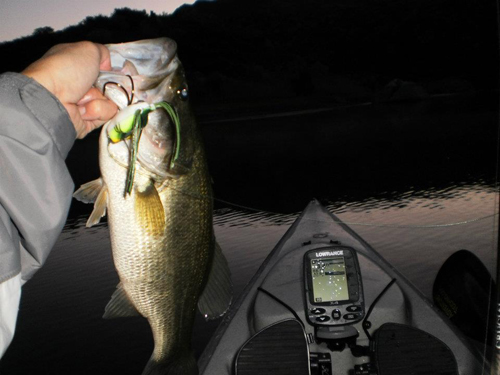Fish Finders

Having a good sonar is key for kayak fishing, and by sonar I mean fish finder. I dislike the using the term fish finder because the only thing that actually finds the fish is you! When I tell my friends I have a sonar (fish finder) on my kayak they sometimes laugh and call it cheating. It’s actually far from it. The sonar doesn’t drive you to the target fish, tell you what bait to use, what gear to use, and magically produce a fish... It’s just a screen with some real time information on it. Using your eyes to understand what is happening around you and above the surface is just as important.
The sonar comes into play to assist in what is happening below the surface. Even before looking at the sonar screen, you first need to have an understanding of the season, fish behavior, patterns, and observations on the water. The only way to learn that is time on the water in the area you plan to fish and from learning about what works and doesn’t work . A good sonar will tell you temperature, depth, vessel speed, and GPS position. It will produce an array of color shades and marks on the screen; then it’s up to you to determine what those marks are.
Sonar uses an array of different electric impulses from a transducer. 50kHz/83kHz/200kHz and 455kHz/800kHz (very detailed down scan images) are the most common transducers. What does that mean? The lower the frequency, the wider the cone or beam of the sonar is. The higher frequency is going to produce a narrower beam but more detailed. Think of a flash light beam, the farther way you are from an object the more light will cover it (50 kHz or 83kHz). The close you are, less light will cover the object but more detailed can be seen (200kHz). For fishing in deep water for big game fish, I use a lower kHz. I have an 83/200 transducer so I use the 83. I want a wide beam to see the most objects as possible in the entire water column. Some sonar’s will allow you to use split screen with 83 in one an d 200 in the other. However I want as much screen as possible dedicated to 83 so I don’t have to squint. If I’m fishing for rock fish, I use 200kHz. More detailed bottom structure and marks at depth. But a narrow beam, so drop your hook quick!
Generally, each sonar manufacture is going to have similar theory in the marks that show up on the screen. When the sonar hits an object, it will reflect the density of the object by the size and color of the mark. Usually the lighter the color, the less dense the object is. With that knowledge you can distinguish sand, reef, rock, and other underwater structures. Fish will typically show up as arches, the bigger the fish, the larger the arch. The arch is actually the fish’s air bladder; only a portion of the body makes up the arch. Small bait fish and squid will show up as peppered marks. An exception to this rule is depth because of Boyle’s Law . The greater atmospheric pressure on a gas (or hollow organ like a fish air bladder) will compress/decrease the volume. Every 33 feet is one atmosphere. Think of a balloon, as you bring the balloon deeper in water it will shrink. When the balloon goes up, the balloon expands. So a yellowtail or big rock fish at 180-200 feet will produce a smaller mark because it’s airbladder is compressed.
What sonar should you get? All depends on what type of fishing you primarily do. And how good your eye sight is! Color finders are worth the extra coin. As I mentioned earlier, the density of an object will show in color shades. So a black and white finder will make it difficult to determine what you are truly seeing. Then it depends on how big of a screen you like and where are you going to place your sonar screen. As far as what brand to buy, well, all 2013 and beyond Hobie kayaks come with a Lowrance ready system. So buying a Lowrance will be easy to install. Other brands can still be used but you might have to improvise where the transducer will be placed.
Other tips: go on youtube and watch fish finder/sonar videos. There is a gold mine of informational videos that help you understand what you are looking at. Then spend some time on the water with YOUR sonar, see what settings give you the best picture for the condition of the day. Can’t catch ‘em from the couch!
Cheers,
-Zach